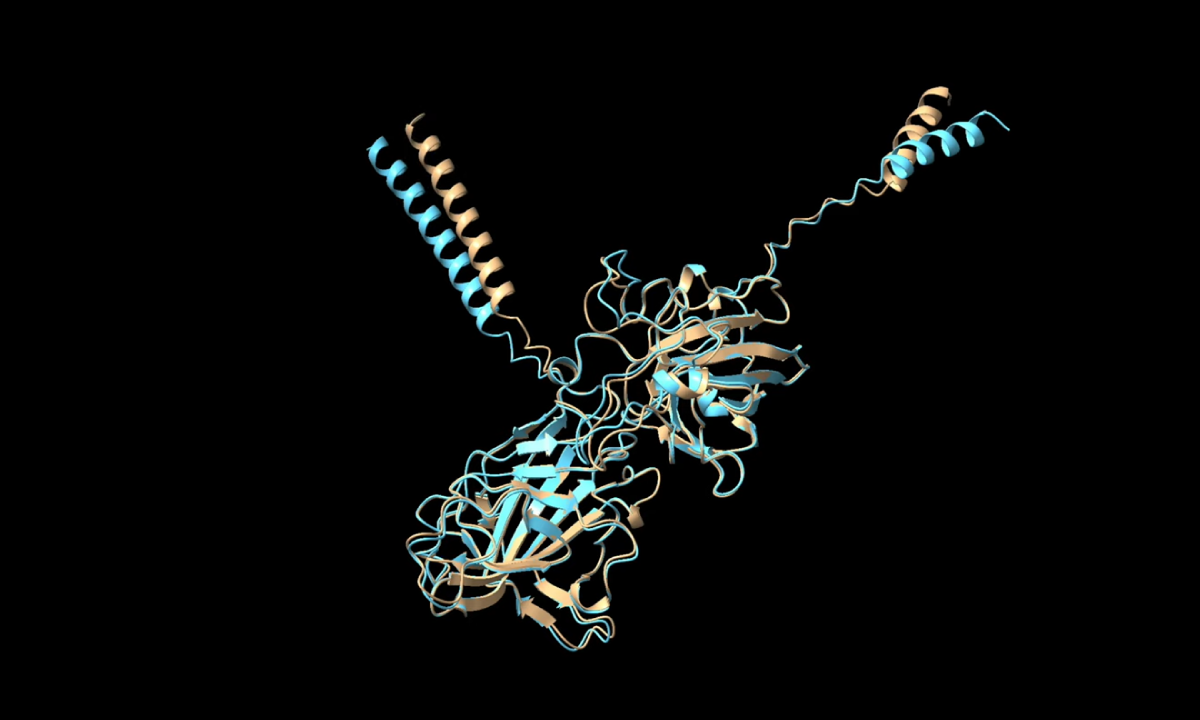What is Protein Folding
Protein folding is the age-old problem of determining the 3D structure of a protein based on an amino acid sequence. Before AlphaFold and other protein folding algorithms, determining the way proteins fold was nearly impossible due to the lack of a reliable method to determine or predict the structure of a protein without actually looking.
AlphaFold, developed by DeepMind, is a notable example of an AI system that predicts the structure of protein using complex reinforcement learning AI, databases of known protein structure. AlphaFold used this knowledge to develop a highly accurate protein folding algorithm that increased a previous 40% accuracy to 60% accuracy to now above 90% accuracy in some cases. Researchers use such tools to predict 3D protein structures with high accuracy, aiding in understanding protein functions and interactions.
Notable AI protein folding algorithms and models feature AlphaFold and RoseTTAFold which researchers and scientists now include in their workflow. We go over some novel approaches to different ways AI protein folding impacts workflow or introduces new methods for tackling problems.
How to Use AlphaFold for Free - Google Colab
AI protein prediction pioneer algorithm AlphaFold released their groundbreaking code for free use via a Google Colab notebook. Researchers can access this Colab notebook and experiment with AlphaFold, or as they call it ColabFold. You can find it by Googling ColabFold or by clicking this link to the notebook.
To use ColabFold, you can paste your desired protein amino acid sequence in the first code block. You can find an amino acid sequence on the Protein Database. However, since most of these proteins are already solved, a good way to test ColabFold’s capabilities is to generate a mutation of a protein by editing a single (or multiple) amino acid in the entire sequence. Make sure to track what you changed!
Paste your mutated sequence (without spaces or line numbers) into the ColabFold notebook, connect to some Google-allocated resources, log into a Google account, and hit File > Run All. Depending on the sequence length, this can take anywhere from 30 minutes to an hour or two.
If you want to run AlphaFold faster than that, you can follow their GitHub here. SabrePC offers complete GPU systems for molecular dynamics or cryo-EM and we can have AlphaFold preloaded without you having to tinker around. The incorporation of a GPU drastically accelerates the computation. Plus, you won’t be relying on shared resources from the cloud. If you plan to run AlphaFold on your next Life Science workstation or solution, just let us know!
Once the folding is completed, it will automatically download a PDB file which you can view in your favorite PDB viewer like VMD, UCSF Chimera, PyMOL, etc. Quick tidbit, you can compare the mutated molecule with its actual form to see what changed using the UCSF Chimera Matchmaker function as seen below:

Using AlphaFold in Molecular Dynamics
In molecular dynamics simulations, there are a ton of end goals for research. Whether it's discovering binding targets for computer-aided drug design to enzyme analysis, in the end, every single simulation uses molecules and proteins as the input. Couple AlphaFold with popular and SabrePC-supported software like AMBER, GROMACS, and NAMD.
Researchers can determine and visualize potential candidates for drug discovery using protein prediction models like AlphaFold and RoseTTAFold, While some molecules have actual records in the PDB, designing novel proteins by predicting their models via AlphaFold provided a whole new dimension for accelerating research.
A protein's structure determines its function. If researchers can quickly and accurately predict a molecule's structure, this can speed up the process of understanding the biomolecular dynamic between two different proteins or view the advantages and disadvantages of different molecular mutations.
There has also been significant research poured towards using Generative AI to reverse engineer AI protein folding. ColabDesign aims to feed the model a 3D model with preferred characteristics or concrete domains (like binding regions, tips, tails, etc.). and have ColabDesign guess the surrounding amino acid sequence. This research can change the way corporations can discover and design drugs.
Using AlphaFold in Cryo-EM Research
Cryo-EM is a specialized research method where molecules are frozen to near zero and using an electron microscope, take thousands of images of each layer to then later stack and reconstruct the molecule. Essentially, cryo-EM reconstructs the actual protein structure or how multiple proteins interconnect with each other.
Seeing the reconstruction as a reality (as opposed to solving it using predicted AI protein folding algorithms) is of high value when it comes to structural biology, material science, drug discovery, and more. But before researchers go and fire up the expensive cryo-EM machine, there needs to be a proof of concept or an expectation. Pair AlphaFold with cryo-EM software like RELION.
AI protein folding can be used before cryo-EM research to generate other potential candidates to interact with a protein in a specific way. Folding techniques are not 100%, identifying the confidence of the location of certain residues. But looking, imaging, and reconstructing a protein using cryo-EM is. AI protein folding using AlphaFold can deliver further information when evaluating the structure of a protein. When two sources corroborate, we can have added confidence in where and what exact residues are where inside a cryo-EM reconstructed molecule. You can read this journal where
Closing Thoughts
At SabrePC, we aren’t full-time groundbreaking researchers like you and perhaps you already implement AlphaFold in your research. The way you plan to use AlphaFold may be more complex than we would ever know.
However, we are experts in hardware. Delivering the tools to accelerate your research is our top goal and we strive to offer the best experience and a solution that just works without fail. Each SabrePC workstation or server is budget-conscious to you, performance-optimized, and comes preloaded with your desired software. Upgrade your compute, skip the software configuration process, and start delivering results faster with a purpose-built, SabrePC solution.


